Janis Couvreux's Blog, page 2
June 23, 2021
Road Trip / Vagabondage
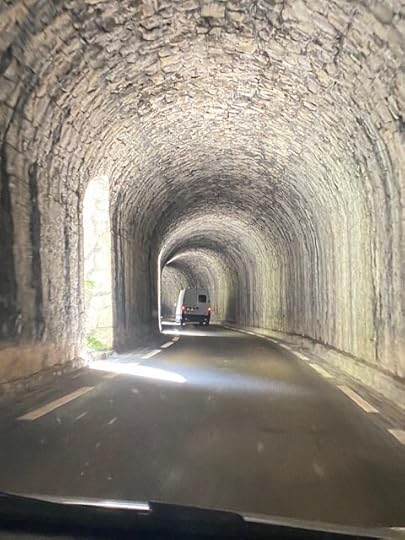
ENGLISH
We are getting used to the fickle whims and ways of the Rhône: Commercial barge traffic, intimidating locks, and what Kawabunga can handle regarding the river current and wind gusts. We should be in Lyon in a week or less. In the meantime, we have been in Valence for a week and took advantage of this secure marina to safely leave Kawabunga and rented a car. We criss-crossed from the Drôme, to Ardèche, to the Hautes Alpes, and to Isère “departements” visiting some amazing areas.
Recap: It’s been hot here too!
• Avignon to Viviers, a long, slow stretch but rewarding as we discovered the pleasant, and incredibly historical village of Viviers (but aren’t they all?)
• Viviers to Valence: Valence itself is nothing to hoot about. It seems to be ‘twixt and ‘tween in identities: occasional architectural hints of the south of France, but with some northern influences as well. Already the deep southwest French accent is much dissipated here.
• Road trip: Crossing the Rhône to the west, we went to Grotte Chauvet. Wow!!! If you know of Lascaux in the Dordogne, this amazing “labyrinth-esque” huge prehistoric cave with extremely well-intact drawings and bones was only discovered in 1994 by 3 French speleologists in the Gorges d’Ardèche. Once the scientific community realized how extraordinary this find was, the state immediately sealed it off to prevent degradation as has happened with other tourist-frequented grottes. An identical reproduction was built several miles away which opened to the public in 2015. And while not the real thing, one quickly forgets that as the site is extremely realistic with a well-organized visit led by passionate, knowledgeable professionals. We also visited:
The Gorges d’Ardèche
Recrossed the Rhône to the east, visiting the town of Nyons, then up to Gap where we saw our first of the Alps!
Unintentional discovery of the surprising village of Corps, as we almost just drove through then decided to spend the night as it was getting late. The hotel was literally on the curve of the major highway that cuts through town but distinguished itself with an amazing gourmet restaurant. Just a few streets behind the main drag, Corps revealed itself to be a little historical gem.
Up to Grenoble, more Alps!
Between Grenoble and Valence lies the region of Vercors, a high plateau with breathtaking gorges and rocky outcroppings. A stronghold for the French Resistance during WWII whose history alone is quite amazing, little-known, and alarming, it has given way today as an outdoor destination for biking, hiking, climbing, canyoneering, and rafting.
Now back in Valence, taking care of business (laundry, grocery shopping, fuel and water fill-ups), we’ll be off again very soon.
FRANÇAIS
Nous commençons à nous habituer aux caprices du Rhône : Le trafic des péniches commerciales, les écluses intimidantes, et ce que Kawabunga peut encaisser en ce qui concerne le courant du fleuve et les rafales de vent. Nous devrions être à Lyon dans une semaine ou moins. En attendant, nous sommes à Valence depuis une semaine et avons profité de cette marina sécurisée pour quitter Kawabunga en toute sécurité et louer une voiture. Nous avons sillonné la Drôme, l'Ardèche, les Hautes Alpes, et les départements de l'Isère en visitant des endroits étonnants.
Récapitulation : Ici aussi, il a fait chaud !
• Avignon à Viviers, un long et lent trajet mais gratifiant car nous avons découvert l'agréable et incroyablement authentique village médiéval de Viviers (mais ne le sont-ils pas tous ?).
• Viviers à Valence : Valence lui-même n'a rien d'extraordinaire. La ville semble se situer entre deux identités : des allusions architecturales occasionnelles au sud de la France, mais aussi quelques influences du nord. Le profond accent français du sud-est s'est déjà beaucoup dissipé.
• Voyage en voiture : En traversant le Rhône vers l'ouest, nous sommes allés à la Grotte Chauvet. Wow !!! Si vous connaissez Lascaux en Dordogne, cette énorme grotte préhistorique "labyrinthique" avec des dessins et des ossements extrêmement bien conservés n'a été découverte qu'en 1994 par trois spéléologues français dans les Gorges de l'Ardèche. Lorsque la communauté scientifique s'est rendu compte du caractère extraordinaire de cette découverte, l'État l'a immédiatement fermée pour empêcher sa dégradation, comme cela s'est produit pour d'autres grottes fréquentées par les touristes. Une reproduction identique a été construite à quelques kilomètres de là et a été ouverte au public en 2015. Et bien que ce ne soit pas la vraie, on l'oublie vite car le site est extrêmement réaliste avec une visite bien organisée et menée par des professionnels passionnés et compétents. Nous avons également visité :
Traversée du Rhône vers l'est, visite de la ville de Nyons, puis montée à Gap où nous avons vu nos premières Alpes !
Découverte involontaire du surprenant village de Corps, que nous avons failli traverser en voiture avant de décider d'y passer la nuit car il se faisait tard. L'hôtel se trouvait littéralement dans le virage de la grande route qui traverse le village mais se distinguait par un restaurant gastronomique étonnant. A quelques rues derrière la rue principale, Corps s'est révélé être un petit bijou historique.
Jusqu'à Grenoble, encore les Alpes !
Entre Grenoble et Valence se trouve la région du Vercors, un haut plateau avec des gorges et des affleurements rocheux à couper le souffle. Bastion de la Résistance française pendant la Seconde Guerre mondiale, dont l'histoire est à elle seule étonnante, méconnue et inquiétante, il est aujourd'hui devenu une destination de plein air pour le vélo, la randonnée, l'escalade, le canyoning et le rafting.
De retour à Valence, nous reprenons notre rythme avec lessive, courses, plein de diesel et d'eau avant notre très prochain départ.
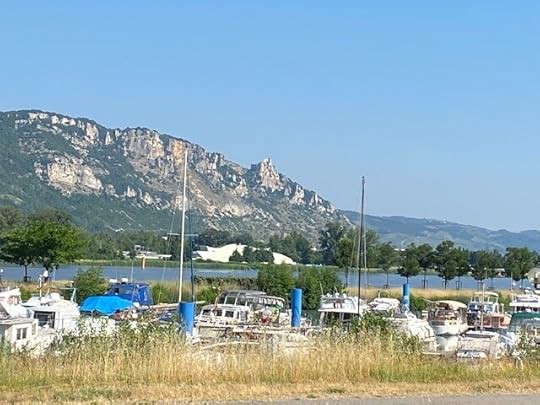
Port of Valence
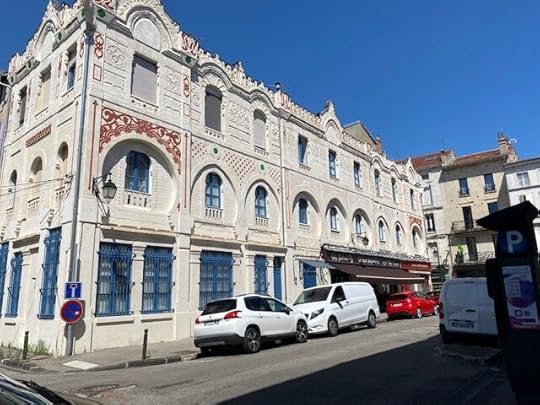
Maison Mauresque in Valence, no real historical significance; it was someone’s fanciful dream of a house once-upon-a time
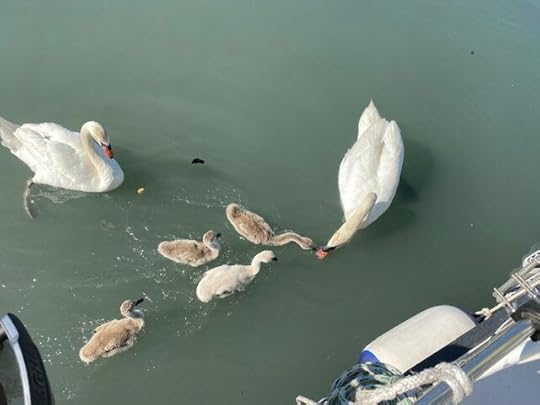
Mom, Dad, and the little ones paid Kawabunga a visit while in the marina in Valence

Replica of Chauvet, interesting architecturally in itself

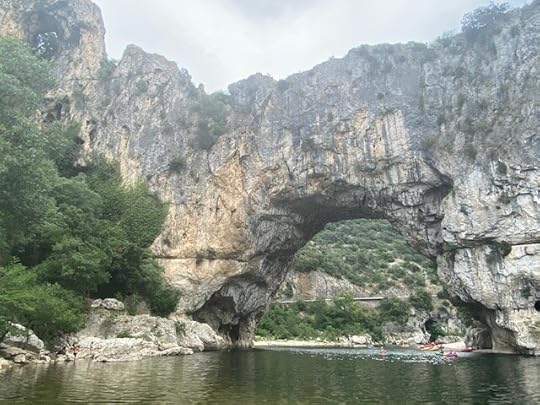
Gorges d’Ardèche, Pont d’Arc, near where the actual Grotte Chauvet exists (now with a special door, locked, hidden, and inaccessible).
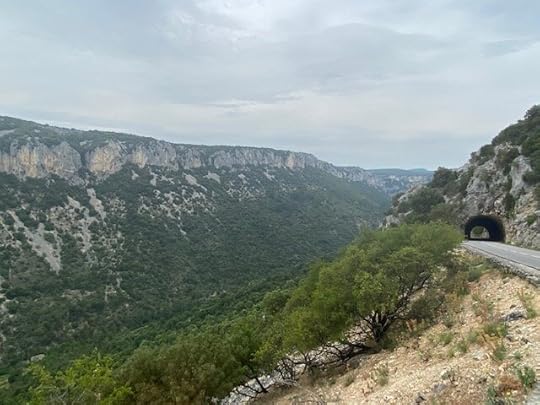
Gorges d’Ardèche
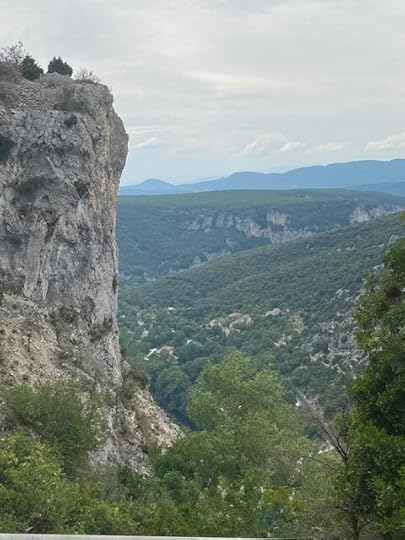
More Gorges d’Arcèche

Just on the road…

Town of Nyons

More Nyons

Our first glimpse of the Alps!

City of Gap, pleasant pedestrian center, jumping off point for explorations, climbing, hiking, etc.

Gap
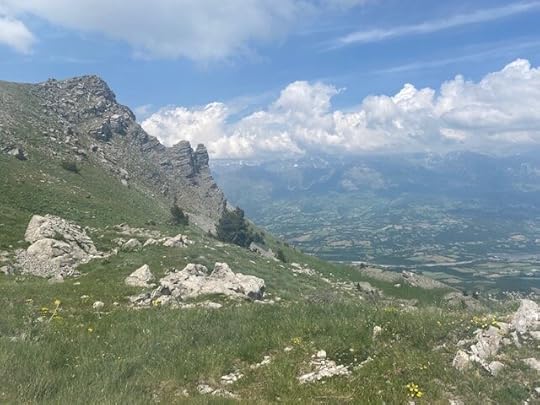
Just outside of Gap, on a little 6 km hike to the Pic de Gleize
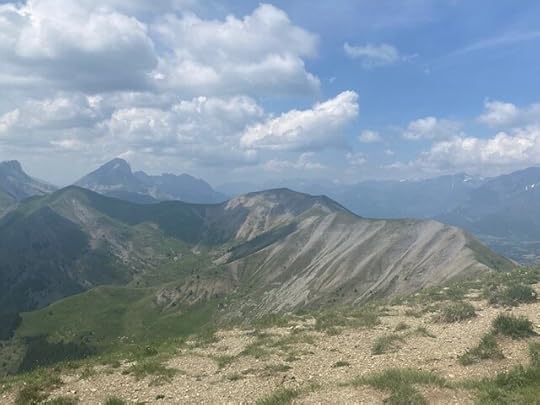
View from the Pic de Gleize
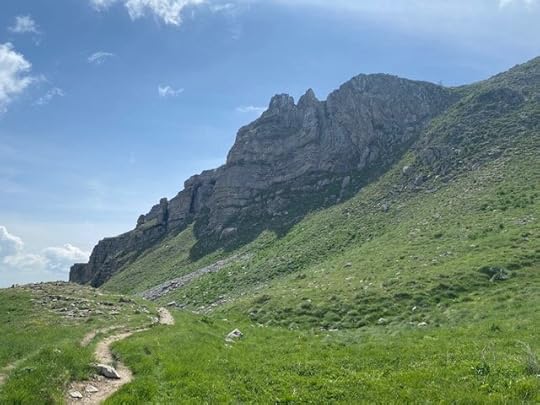
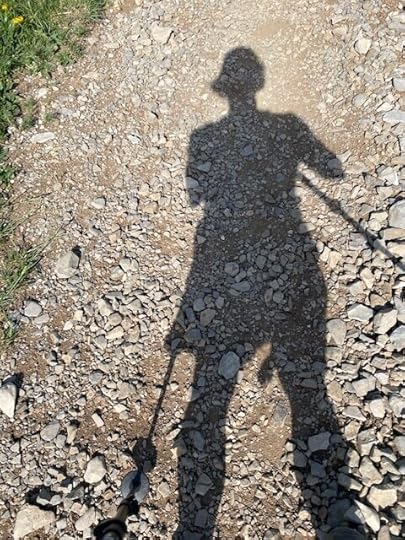
Proof of the hike!

Village of Corps, on our way to Grenoble

Napoleon slept here in Corps on his return to France from exile in Elbe, on his way to Grenoble
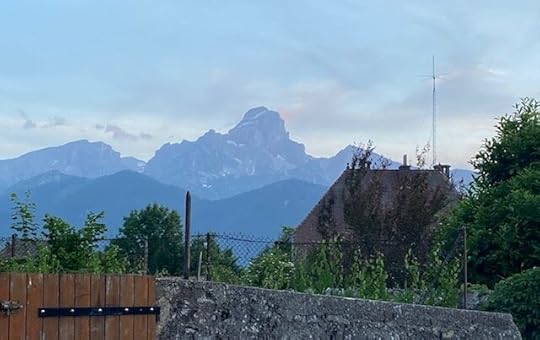
View of some of the Alps from Corps
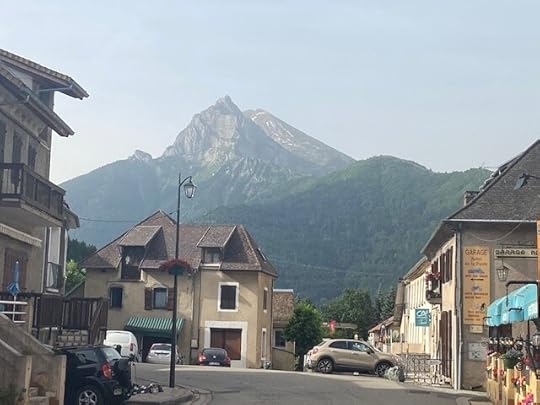
More views
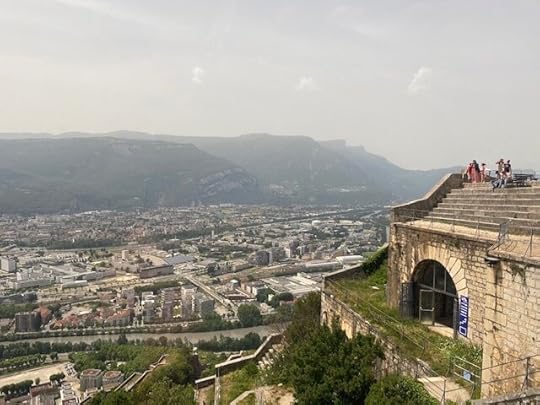
Grenoble from the Bastille
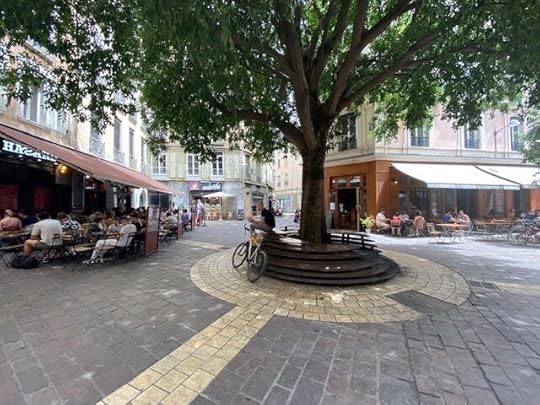
Grenoble

in the Gorges of Vercors

Vercors

Vercors

Plateau de Vercors where some of the mountain biking takes place

Vercors

French Resistance massacre Memorial de Vassieux
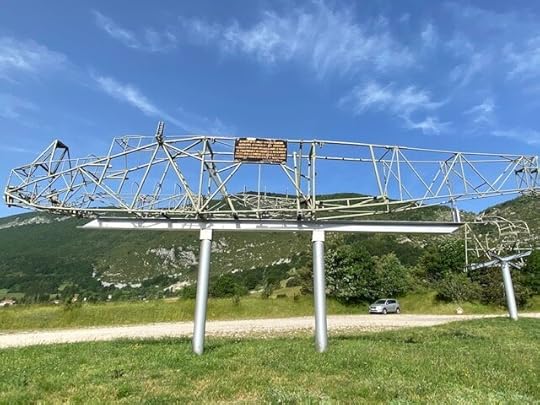
One of the dozens of German gliders that landed on the Vassieux airfield July 21 1944 (that the Resistance had prepared for the Allied forces) bringing some of the 14,000 Germans troops that ambushed and massacred the Vercors Resistance and obliterated Vassieux, executing 200 of the villagers without mercy: women, children, and the aged.
June 10, 2021
The Rhône / Le Rhône
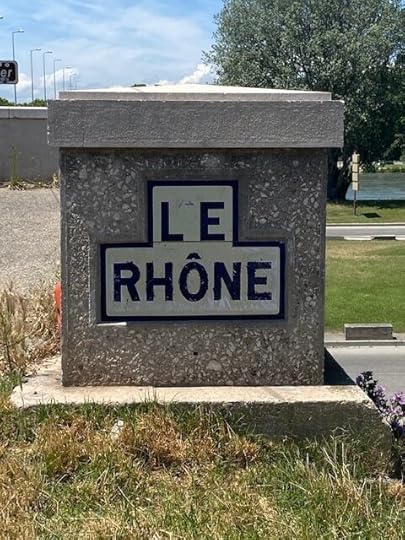
ENGLISH
We are now on the Rhône river, in Provence, a whole different geography and atmosphere from where we started south of Bordeaux, as well as the Camargue region, our last stop. This jump took some waiting and calculating as Michel studiously surveyed the website that gives hourly updates of the water level and subsequent current that we needed to affront in order to cross this frontier. Our boat is not powerful so in a sort of “convoy” along with two other boats, we took a leap of faith (judging that conditions were favorable) to cross the “border” and into our first Rhône lock.
Once we veered into the Rhône, the current reduced our speed immediately from 8-9 km/hr to 4-5 km/hr but we were able to chug along steadily to Arles, followed by Avignon, our current port. Here we await the abatement of the infamous Mistral wind. We can’t make any headway with a combination of this formidable headwind plus the current, so we’ve been visiting friends who live in the area hoping that projections for better conditions will pan out for Friday, June 11.
Recap:
• Gallician to St. Gilles last port in the Canal Rhône à Sète; a lock to the Petit Rhône, transitioned to the mighty Rhône just beyond Arles, then Avignon.
• Taking advantage of our location to visit some inland spots thanks to friends who reside in the area: St Remy de Provence, Les Baux de Provence, Uzès, Lussan…all amazing places. Avignon has also been a complete surprise for us. Despite formerly residing in France, and our numerous trips here over the years, Avignon was never on our radar. Aside from being a very pleasant place to meander, the visible history is extraordinary, marked most notably by the Palais des Papes.
FRANÇAIS
Nous sommes maintenant sur le Rhône, au Nord de la Provence. La géographie et l'atmosphère sont totalement différentes de celles de notre point de départ au Sud de Bordeaux, ainsi que de la Camargue notre dernière étape. Ce saut a demandé un peu d'attente et de calcul. Michel a du étudier attentivement le site Web qui donne les mises à jour horaires du niveau d'eau et du courant que nous devons affronter pour franchir cette frontière. Notre bateau étant peu puissant, deux bateaux amis jugeant le moment favorable, nous ont précédés en nous annonçant les conditions de navigation en amont, nous aidant ainsi à traverser la "frontière" et entrer dans notre première écluse du Rhône.
Une fois que nous avons viré dans le Rhône, le courant a immédiatement réduit notre vitesse de 8-9 km/h à 4-5 km/h, mais nous avons pu avancer régulièrement jusqu'à Arles, puis Avignon, notre port actuel. Ici, nous attendons que le fameux mistral se calme. Nous n'arrivons pas à avancer avec la combinaison de ce formidable vent de face et du courant. Nous avons donc rendu visite à des amis qui vivent dans la région en espérant que les prévisions de meilleures conditions se concrétiseront pour le vendredi 11 juin.
Récapitulatif :
• Gallician à St. Gilles dernier port du Canal Rhône à Sète ; dernière écluse du canal et entrée sur le Petit Rhône, transition vers le grand Rhône juste après Arles, puis Avignon.
• Nous profitons de notre situation pour visiter quelques endroits de l'intérieur grâce à des amis qui résident dans la région : St Remy en Provence, Les Baux de Provence, Uzès, Lussan... tous des endroits étonnants. Avignon a également été une surprise totale pour nous. Bien que nous ayons résidé en France et que nous y ayons fait de nombreux voyages au fil des ans, Avignon n'avait jamais figuré sur notre radar. En plus d'être un endroit très agréable pour flâner, l'histoire visible est extraordinaire, marquée notamment par le Palais des Papes.
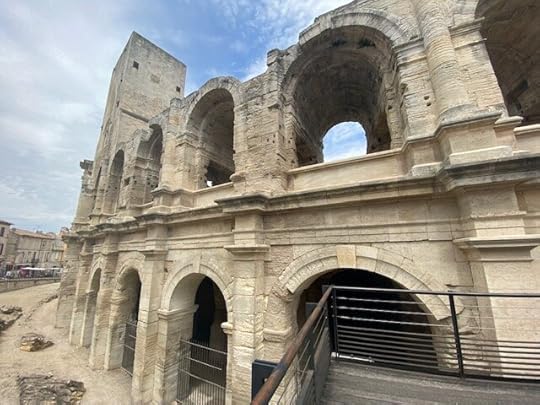
The Arènes of Arles
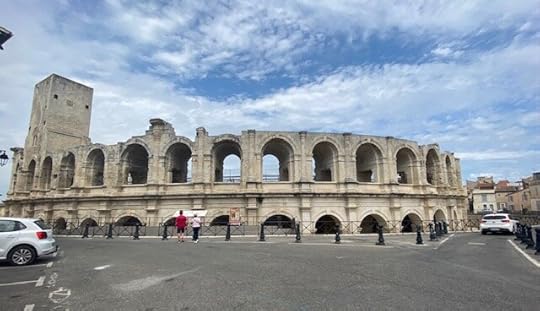
The Arènes of Arles
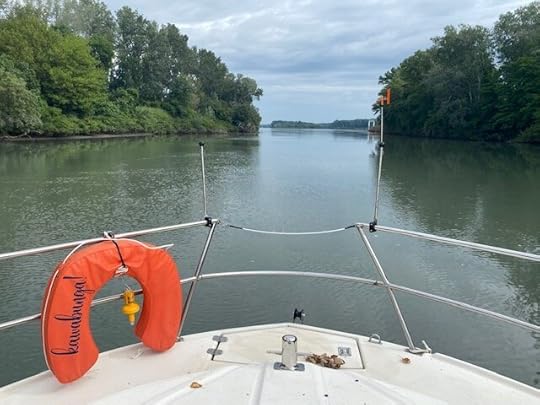
'“Thar she is”: the Rhône!
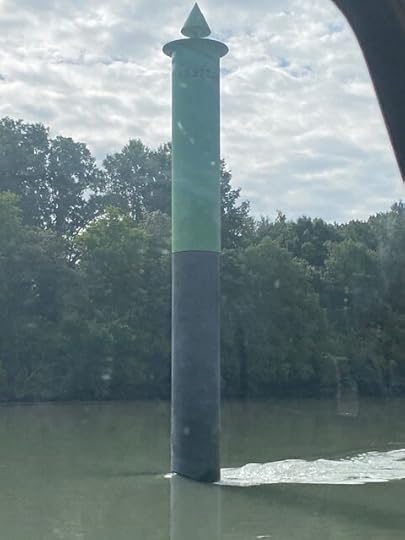
Riding against the current in the Rhône
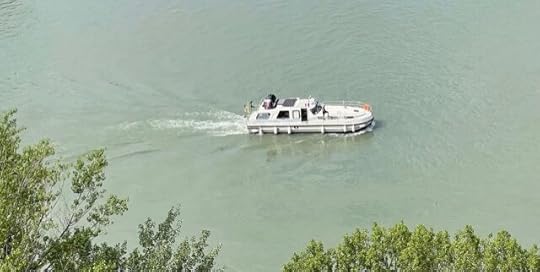
Kawabunga arriving in Avignon
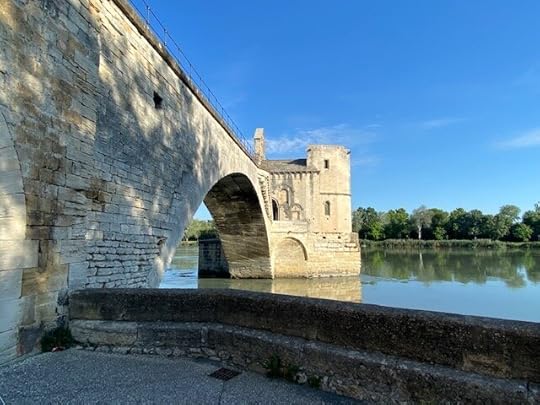
The bridge St Bénezet, the famous “sur le pont d’Avignon…”
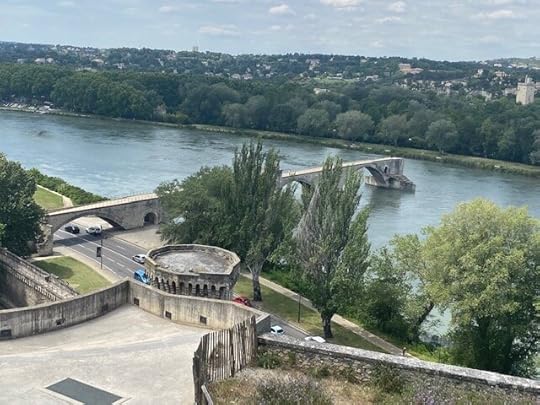
The bridge St Bénezet
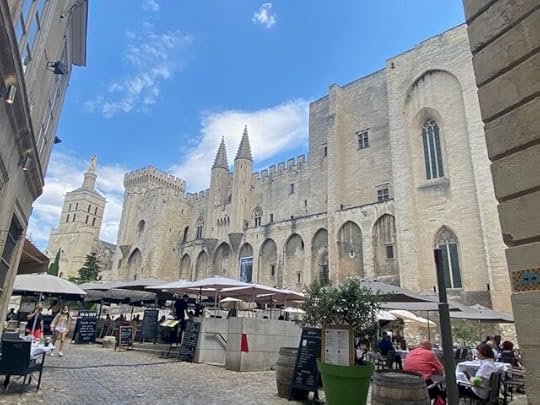
Palais des Papes, Avignon
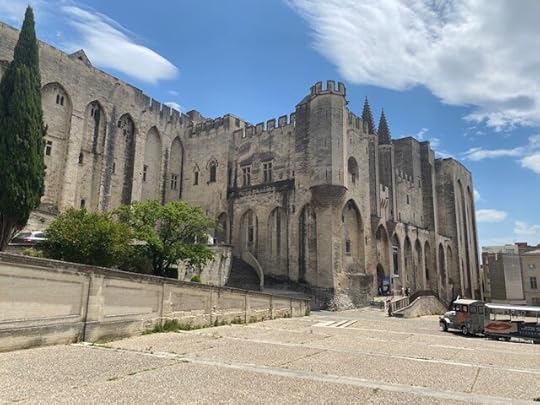
Palais des Papes, Avignon
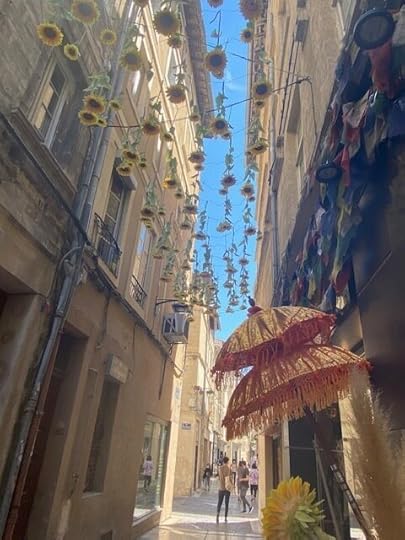
Avignon

Avignon
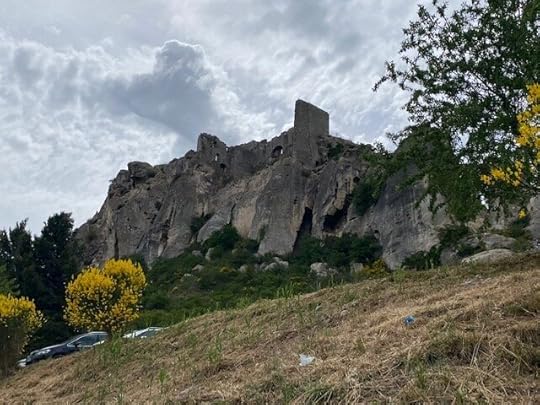
Les Baux de Provence
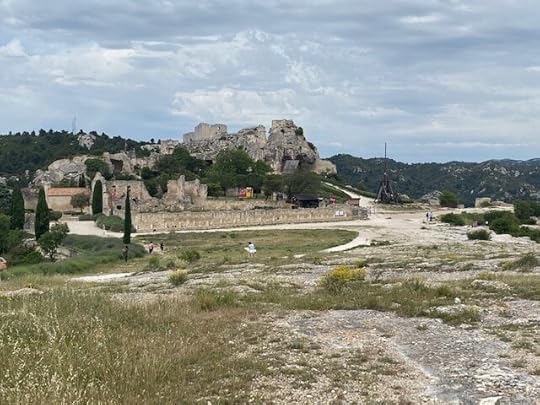
Les Baux de Provence
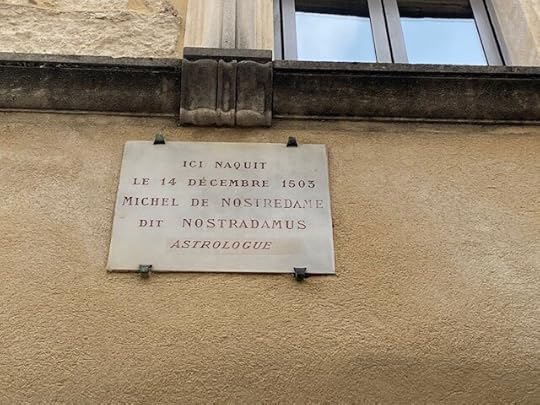
Birthplace of Nostradamus in St Remy en Provence
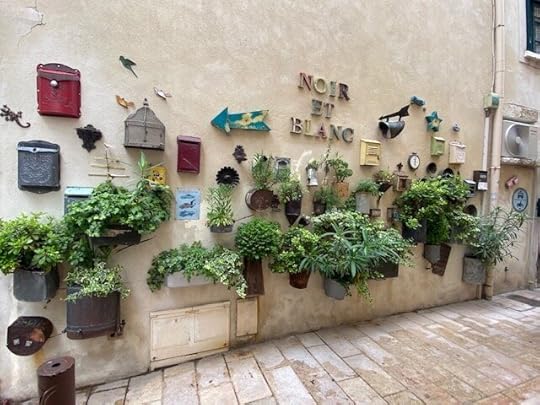
St Remy en Provence
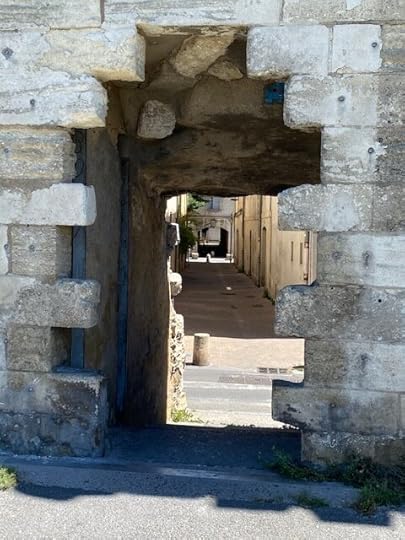
Through the remparts of Avignon
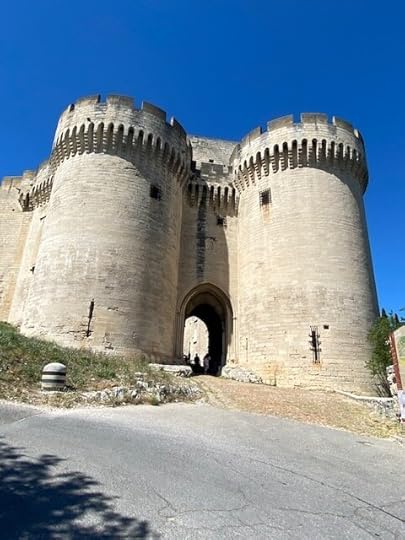
Fort St André across the Rhône river from Avignon
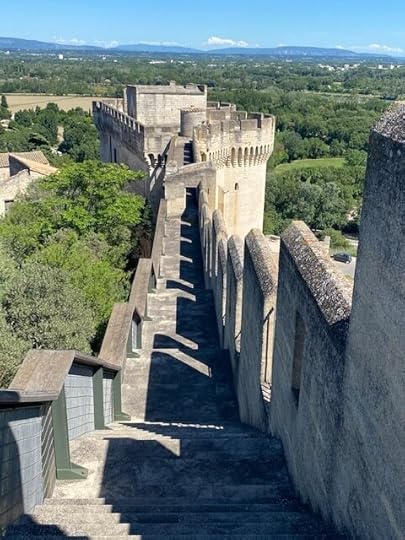
Fort St André
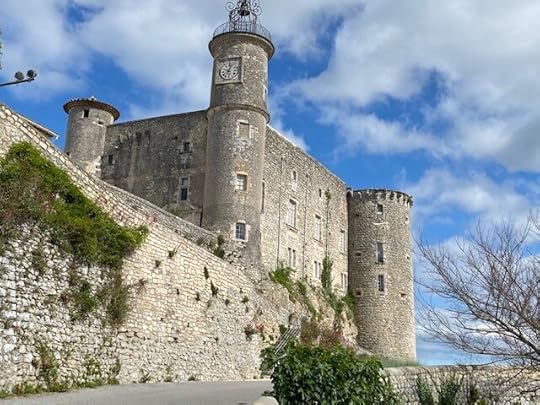
Chateau de Lussan, voted one of the “plus beaux villages de France”

Looking across to the Cevennes region from a promontory in Lussan
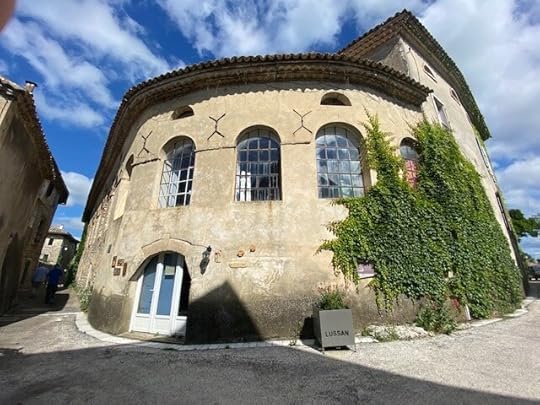
Lussan

Uzès
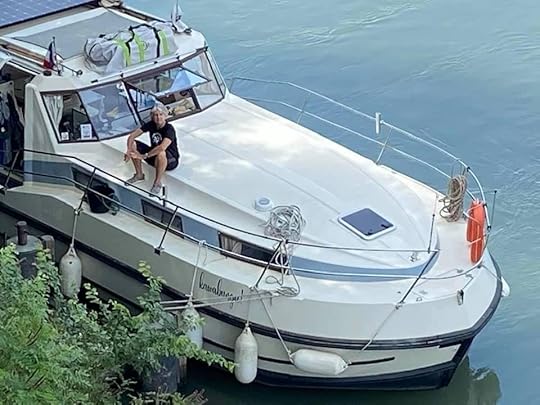
Yours truly
May 28, 2021
Boats, Bikes, and 'Bi-peds' / Bateaux, Velos et à Pied

ENGLISH
Aigues Mortes, Gallician, St. Gilles…we are in the heart of the Camargue, France’s unique wetlands, known for their pink flamingos, majestic white horses, toros, rich aquatic and fowl life, fauna and flora, and salt marshes that produce Sel de Camargue. Stretching from Aigues Mortes (meaning “stagnant water”) and the Mediterranean Sea to the flanks of the Rhône, we traverse this region via the Canal Rhône à Sète, which cuts a straight—albeit sometimes monotonous—swath through this landscape. From Kawabunga’s deck along with mounting on our ebikes and on foot, (boats, bikes and bi-peds!) we are visiting the backroads and trails.
Recap:
• Last stop, Frontignan, was a delightful canal port town, with all the amenities (most importantly a laundromat!). There we were finally able to be French at an outdoor café! (France has partially opened since May 19).
• The medieval city of Aigues Mortes itself takes your breath away. The huge walled-in “vieille ville” is an amazingly well-preserved Medieval walled-in city. It took us almost 3 hours to walk the whole length and breadth of the remparts. Despite semi-confinement rules, Aigues-Mortes was CRAWLING with French tourists on a recent 4-day holiday weekend!
We are now in a bit of a holding pattern, currently tied up in the tiny hamlet of Gallician in the heart of the “petite Camargue,” while we wait for the Rhône to calm down from the influx of recent rains and settle into its summer flow and thus more navigable conditions for our limited engine power.
FRANÇAIS
Aigues Mortes, Gallician, St. Gilles... nous sommes au cœur de la Camargue, cette région humide unique en France, connue pour ses flamants roses, ses chevaux blancs majestueux, ses toros, sa riche faune aquatique et aviaire, sa faune et sa flore, et ses marais salants qui produisent le Sel de Camargue. S'étendant d'Aigues Mortes (signifiant "eau stagnante") et la Méditerranée aux flancs du Rhône, nous traversons cette région par le canal du Rhône à Sète, qui trace une ligne droite - parfois monotone - à travers ce paysage. Depuis le pont du Kawabunga, de nos ebikes ou à pied (bateaux, vélos et bi-peds !), nous découvrons le pays par les chemins de traverse et les sentiers.
Récapitulation :
- Le dernier arrêt, Frontignan, était une charmante ville portuaire sur le canal, avec toutes les commodités (surtout une laverie automatique !). Là, nous avons enfin pu apprécier les terrasses de café! (La France est partiellement ouverte depuis le 19 mai).
- La ville médiévale d'Aigues Mortes est à couper le souffle. L'immense " vieille ville " fortifiée est étonnamment bien préservée. Il nous a fallu près de 3 heures pour faire le tour des remparts. Mais, malgré les règles de semi-confinement, Aigues-Mortes grouillait de touristes français en ce long week-end de l’Ascension !
Nous sommes maintenant amarrés dans le petit hameau de Gallician au cœur de la "petite Camargue" attendant que le Rhône se calme après l'afflux des pluies récentes et s'installe dans son régime d'été avec des conditions de navigation meilleures pour notre puissance moteur limitée.

Remparts of Aigues Mortes

Salt!
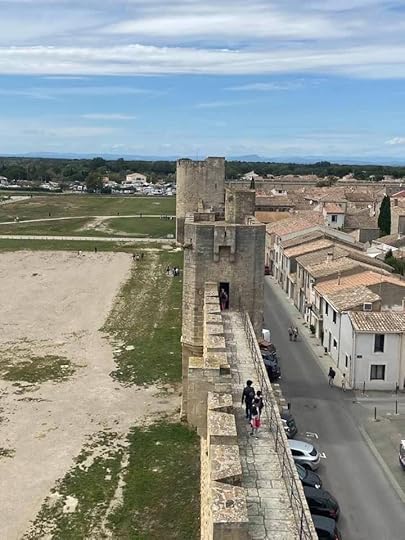

Camargue Canal natives

Now that’s a toll booth! Medieval toll booth used to control the road entering Aigues Mortes in the 13th Century.
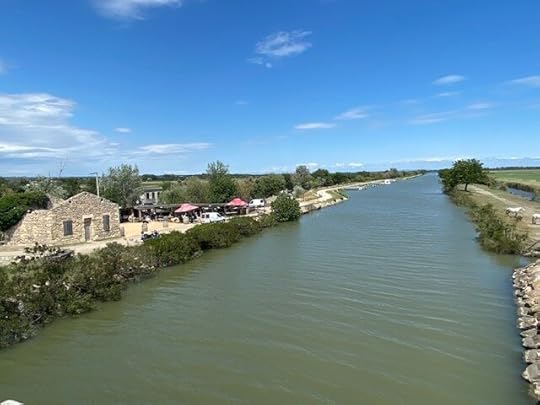
Along the Canal near Gallician
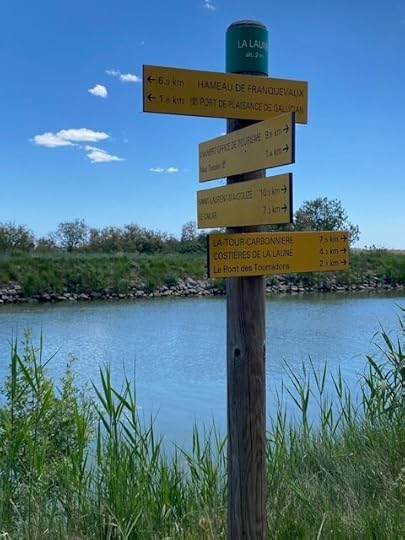
Bike / pedestrian path along the canal
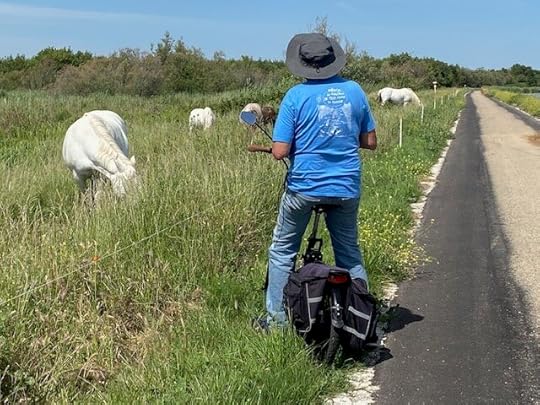
On a pedaling day
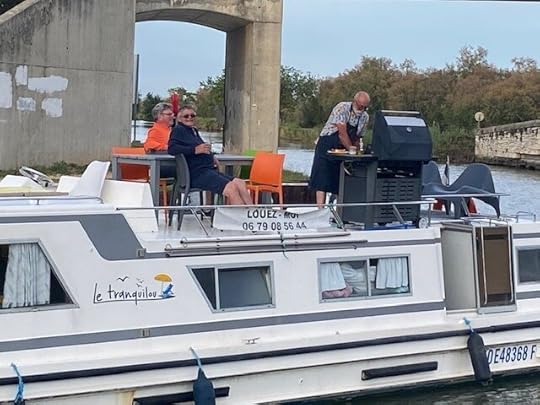
Dock neighbors who have all the comforts of home
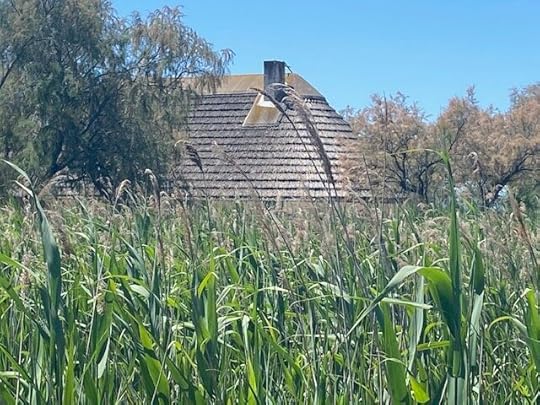
Traditional Camargue architecture
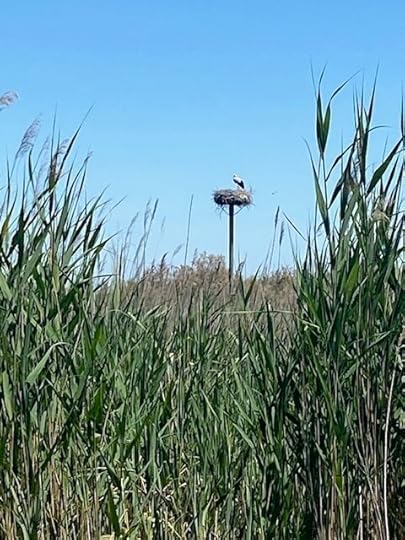
Stork nest in a nearby nature preserve

Sunrise and morning coffee from our deck

Very tame ducks used to boat passersby. They know where their bread comes from!
May 18, 2021
Good-bye Canal du Midi, Bonjour La Mediterranée
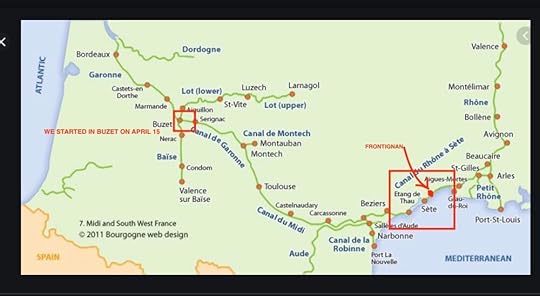
ENGLISH
As of May 17 we officially left the Canal du Midi. After spending a night in Agde, we followed the tail end of the Canal du Midi where it pours into the Etang de Thau, a large body of seawater separated by a simple ribbon of beach from the Mediterranean sea. After briefly visiting Marseillan (cute little, Mediterranean touristy port enclave), we braved crossing the Etang in 25 mph winds with whitecaps, which ARE NOT ideal conditions for a flat-bottomed, canal-hewed, non-seafaring vessel like Kawabunga. We apprehended this crossing from the get-go, knowing that we had to swallow this pill, in a more-often-than-not windy corridor. For a sailboat it’s a piece of cake! Nevertheless, Kawabunga performed admirably, and we quietly tied up to the quai at Frontignan, a welcoming town just a few miles east of Sète, where we spent today, May 18, touring by bike.
Brief recap:
• From Carcassonne, we’ve had a few comings-and-goings of French guests on board. Stops at Colombiers, Beziers (infamous for its “ladder” of the 8-lock Fonserannes ensemble, and quite the tourist attraction) and Agde (not so picturesque).
• Sometimes we encounter “familiar” faces as we may see a long-haul cyclists with all their camping/travel equipment the day following our first friendly mutual salutes hailed between the bike path and our boat deck.
• We also come across the occasional Compostelle/Camino backpackers. Some started in Italy, Switzerland, Germany, or as one backpacker recounted: “five years since I started in Jerusalem”! Like the canals, the Camino paths are everywhere!
Now on to laundry, grocery shopping, and Michel’s motor oil change duty. Reality beckons.
FRANÇAIS
Le 17 mai, nous avons officiellement quitté le Canal du Midi. Après avoir passé une nuit à Agde, nous avons atteint l’extrémité Sud du Canal du Midi à sa jonction avec l'étang de Thau, grande étendue d'eau de mer séparée par un simple cordon de sable de la Méditerranée. Après une brève visite de Marseillan (mignonne petite enclave portuaire touristique), nous avons bravé la traversée de l'étang avec des vents de plus de 40 km/h et des crêtes blanches. Ce ne SONT PAS les conditions idéales pour un bateau de rivière à fond plat, comme le Kawabunga. Nous avions appréhendé une traversée ventée dès le départ, et nous savions qu’il nous faudrait certainement avaler cette pilule. Pour un voilier, c'est un jeu d'enfant! Néanmoins, Kawabunga s'est admirablement comporté et nous nous sommes tranquillement amarrés au quai de Frontignan, une ville accueillante située à quelques kilomètres à l'est de Sète où nous sommes retournés le 18, mais cette fois avec nos vélos.
Récapitulons brièvement :
• Depuis Carcassonne, nous avons eu plusieurs invités français à bord avec des arrêts à Colombiers, Béziers ( célèbre pour l’échelle de Fonserannes constituée de huit écluses successives) et Agde (moins pittoresque).
• Nous rencontrons parfois des visages "familiers". Nous pouvons retrouver ainsi un cycliste au "long cours" à différentes étapes après un premier salut amical envoyé entre la piste cyclable et le pont du bateau.
• Nous rencontrons aussi occasionnellement des routards de Compostelle/Camino. Certains ont commencé en Italie, en Suisse, en Allemagne, ou comme l'a raconté un routard que nous avons croisé : "J'ai commencé à Jérusalem il y a cinq ans" ! Comme les canaux, les chemins du Camino sont partout !
Maintenant, place à la lessive, à l'épicerie et à la vidange du moteur. La réalité nous appelle.
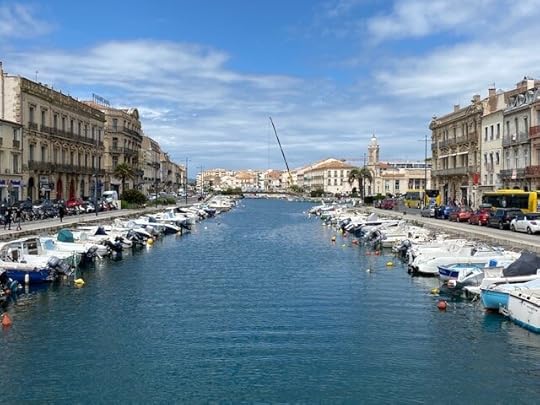
Sète

Kawabunga affronting the open water

You can’t see them, but there were whitecaps
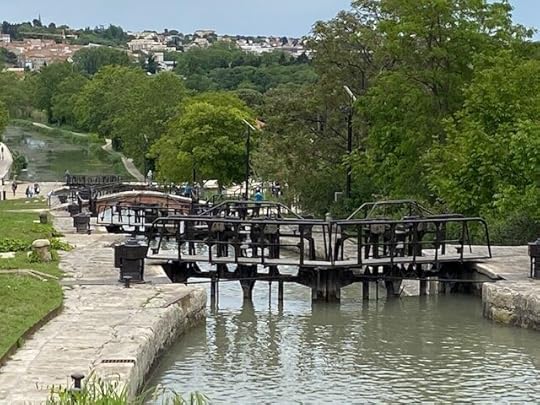
The 8 locks of Fonserannes

The 8:15 a.m. round-up of boats entering the Fonserannes locks

Convoy of boats in the Fonserannes locks, Kawabunga in the forefront
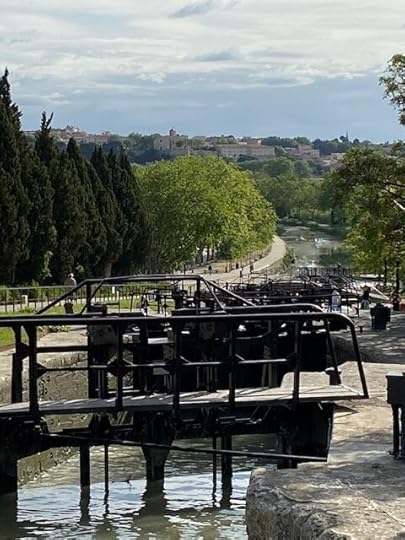
Another view of the Fonserannes locks


Images of Beziers
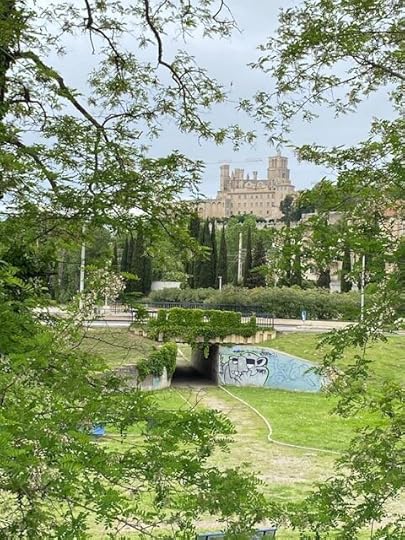

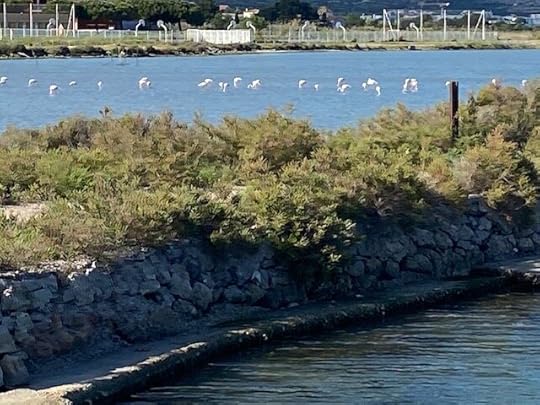
Flamingos at Frontignan

Frontignan getting ready for official May 19 opening of outside dining. First time in months.

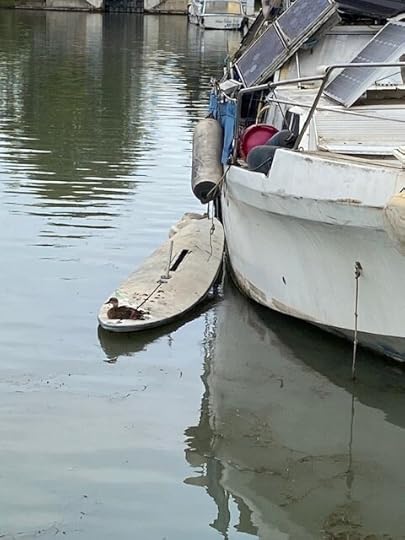



May 9, 2021
Landing in a French Landmark, Carcassonne
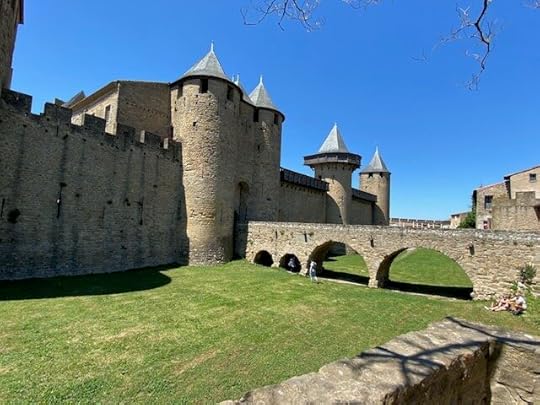
ENGLISH
What a difference 40 years makes. Since I first came to France in 1974, I have passed through Carcassonne several times. A generation ago one could see the burgeoning beginnings of a promising future tourist mecca. Today it is indeed that, however, with Covid, we were lucky to have just skeletal inklings of what we’ve heard can be a Disneylandesque atmosphere in a normal summer season.
From Toulouse our lock routine has changed from riding up, to riding down the locks. Now we descend with the water inside of instead of rising. At the hamlet of Naurouze a new demarcation, something akin to the Continental Divide occurs, where the water changes from running to the Mediterranean instead of to the Atlantic Ocean. We spent the night in this park-like anchorage, taking advantage of the opportunity to visit the monuments that honor this engineering feat.
From there we targeted the larger town of Castelnaudary, famous for its Cassoulet dish. Here a friend joined us for the two-day trip to Carcassonne. We spent the next night in the tiny anchorage of Bram, a charming “circular” medieval village whose streets were built along a circular plan. With one warm and sunny day, and one cool and rainy day, our friend got a little taste of both sides of the canal coin.
Now that France loosening up a bit its lockdown, more friends are joining us here in Carcassonne for another couple of days as we embark upon our last section to the Mediterranean.
The “loosening” also means more boats are beginning to pop up and outdoor dining should be possible by May 19. While it has been nice to easily navigate the locks without having to juggle other boats, it will be nice to have more life along the banks once more.
FRENCH
Quelle différence en 40 ans ! Depuis ma première visite en France en 1974, je suis passée plusieurs fois par Carcassonne. Il y a une génération, on pouvait voir les prémices d'un futur haut lieu touristique. Aujourd'hui, c'est effectivement le cas, mais avec le Covid, nous avons eu la chance de n'avoir qu'un soupçon de ce que nous avions entendu dire être une atmosphère Disneylandesque pendant la saison estivale.
Depuis Toulouse, notre routine aux écluses a changé, passant de la montée à la descente. Maintenant, nous descendons avec le courant. Nous découvrons ainsi au hameau de Naurouze, la démarcation indiquant la ligne de partage des eaux entre l'océan Atlantique et la Méditerranée. Nous passons la nuit dans ce mouillage ressemblant à un parc, profitant de l'occasion pour visiter les monuments qui honorent cet exploit d'ingénierie.
Nous nous sommes ensuite dirigés vers ville de Castelnaudary, célèbre pour son Cassoulet (livré et dégusté à bord). C'est là qu'une amie nous a rejoint pour le trajet de deux jours qui nous amena à Carcassonne. Nous passons la nuit suivante dans le minuscule mouillage de Bram, un charmant village médiéval avec les rues construites selon un plan circulaire.
Maintenant que la France desserre un peu son étau, d'autres amis doivent nous rejoindre ici pour quelques jours et nous accompagner un peu sur ce dernier tronçon vers la Méditerranée.
Cet "assouplissement" signifie également que d’avantage de bateaux commencent à apparaître et nous espérons bien pouvoir déjeuner en plein air à partir du 19 mai. Bien qu'il ait été agréable de naviguer facilement dans les écluses sans avoir à jongler avec d'autres bateaux, il sera aussi agréable de voir à nouveau plus de vie le long des berges.
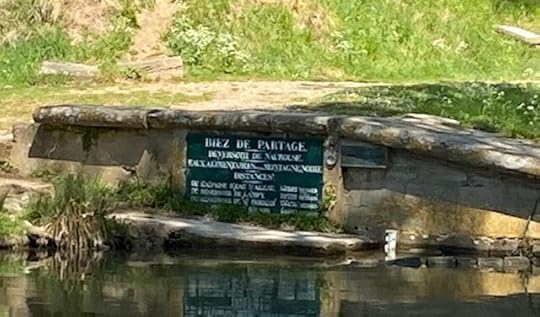
Where the water parts from the Atlantic Ocean to the Mediterranean Sea

In the Naurouze park for the night
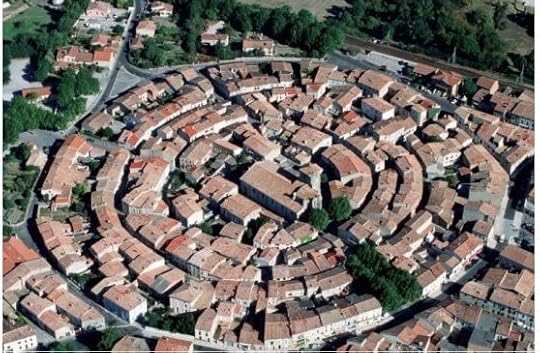
Bram built according to a circular plan
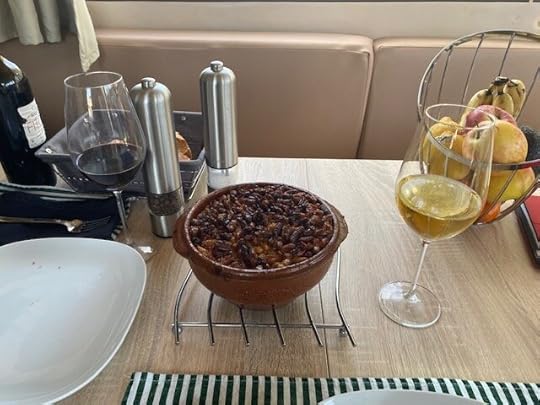
A take-out version of a Cassoulet meal from Castelnaudary
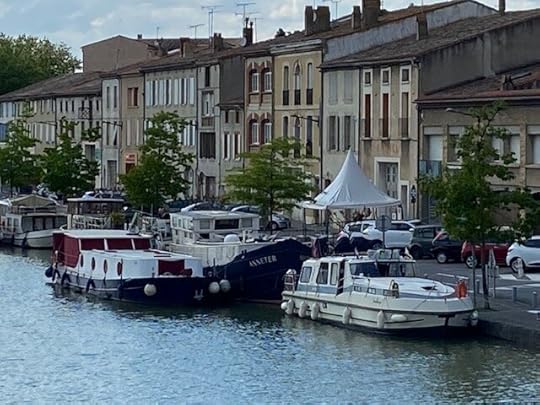
In the port of Castelnaudary
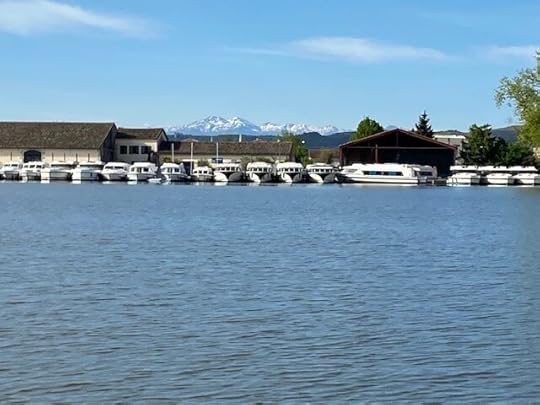
A peek of the Pyrenees from the port of. Castelnaudary
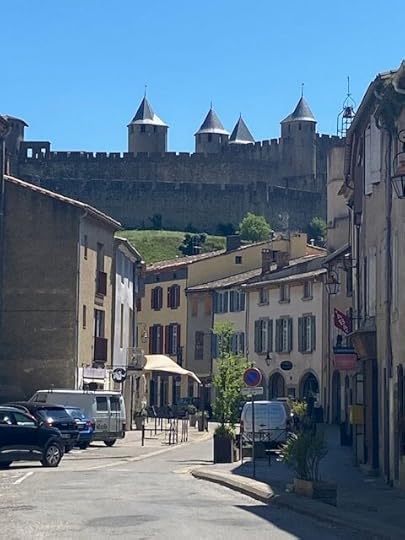
Coming upon the old Cité of Carcassonne
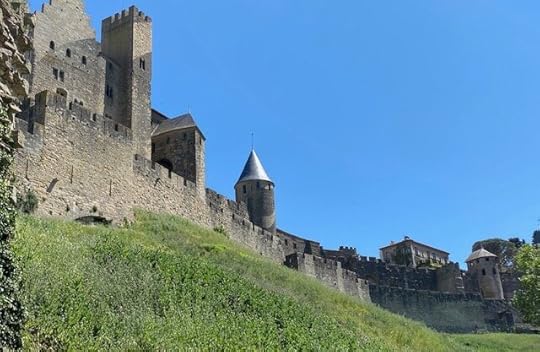
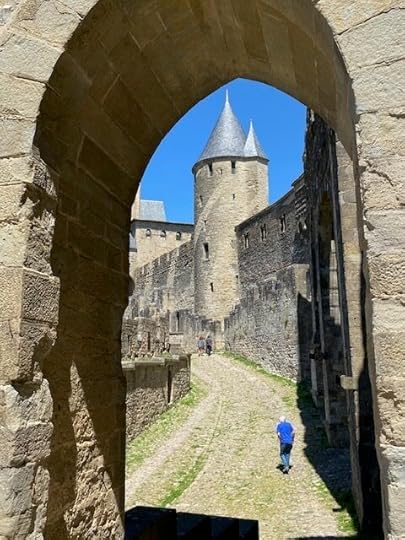
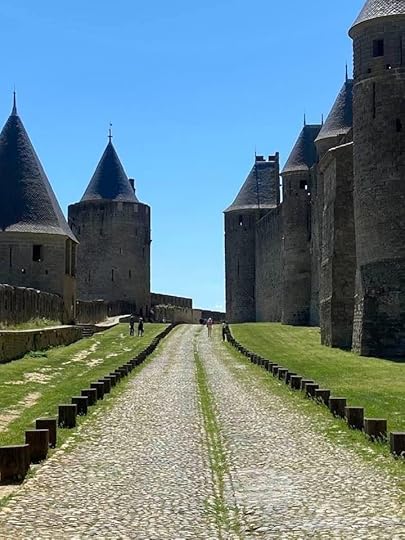
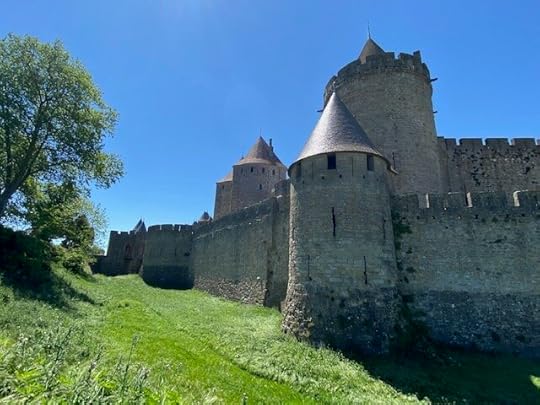
May 1, 2021
Canal Lock Tutorial: Follow us through a lock
Here are eight short clips of Kawabunga going through a lock. It’s hard to film, drive, and maneuver the boat in the lock at the same time (bravo captain/camerman Michel!), and I’m not a video editor so please disregard all the “faux pas” and nonexistent transitions.
April 26, 2021
Toulouse!
ENGLISH
Toulouse! After 10 days of navigation, we arrived in Toulouse on Sunday, April 25. This is somewhat of a milestone in that from here on we are officially on the Canal du Midi, which starts in Toulouse. Up to this point we were on the Canal de Garonne, kind of a “feeder” canal from Bordeaux to Toulouse.
Here we’ll be catching up on laundry, getting one of our ebikes repaired, and visiting Toulouse, notable for its brick architecture, a “ville rose.”
Unfortunately, this normally vibrant city with the French southern sunny disposition and particular accent “chantant” is currently very rainy and thanks to Covid, not terribly lively. Things should be opening up in France around May 15, however.
This is where we are beginning to have some of the same subculture, boat experiences of sailing as we did with Cowabunga. Here in the port of St. Sauveur, Toulouse, we have met up with the American 60 ft “peniche” Les Vieux Papillons” whom we met two years ago in our starting point of Buzet. Originally from Colorado, they live and travel permanently on their fabulous “Dwell” architecture magazine worthy abode. Earlier in Moissac we also met another American couple on an equally fabulous floating palace, and they all know each other. We will all certainly cross paths again and again. I am certain.
There is an upside to the current pandemic situation: France is hungry for tourists! We are the only boat circulating right now in this area, and while a bit sad and lonely, it certainly is bringing out the best in the French canal authority operations, the VNF (Voies Navigable de France) and port captain offices. Although we are allowed to navigate, “Covid oblige” we must check in with the VNF with our planned itinerary. They call us to make sure everything is A-OK, they give us personal cell numbers in case we need anything, and sometimes they even follow along the canal road with us to make sure the locks are working properly. The welcome we’ve had in the ports of Moissac, Castelsarrasin, Montauban, and now Toulouse have been overwhelmingly thorough, warm, friendly, and extremely helpful. I think they are all so bored thus glad to see us! The two sides of COVID on the canal.
FRANÇAIS
Toulouse! Après dix jours de navigation, nous avons atteint Toulouse le 25 avril. Le canal de Garonne nous a amené jusqu’à cette étape, remarquable par le fait que nous sommes maintenant officiellement sur le canal du Midi.
Nous profitons de cette escale pour nous rattraper dans les tâches ménagères comme la lessive, faire réparer un des vélos électriques, et surtout visiter Toulouse, remarquable par ses constructions en briques, d’où son surnom de « ville rose ».
Malheureusement, cette ville d’habitude si vibrante avec son ensoleillement et l’accent chantant qui la caractérisent, était aujourd’hui sous la pluie et ses habitants peu visibles. Cependant, les choses devraient s’améliorer, en principe, après le 15 mai.
Il y a malgré tout un bon côté dans cette situation pandémique : la France a soif de touristes ! Nous sommes le seul bateau navigant dans toute cette région du sud-ouest, et bien que cette solitude soit un peu triste, cela fait apparaitre les autorités gérant le canal, le VNF (Voies Navigables de France), ainsi que les capitaineries, sous leur meilleur angle. Bien que nous soyons autorisés à naviguer, il nous est demandé d’avertir le VNF de nos plans de navigation du lendemain. Ils nous appellent pour être sur que tout va bien, nous donnent leur numéro de portable personnel au cas où, et quelques fois nous suivent d’écluse en écluse pour vérifier qu’elles fonctionnent proprement. L’accueil dans les ports de Moissac, Castelsarrasin, Montauban et maintenant Toulouse ont été chaleureux, serviables et amicaux. Je pense qu’ils s’ennuient et sont heureux de nous voir ! Les deux faces du COVID sur le canal.
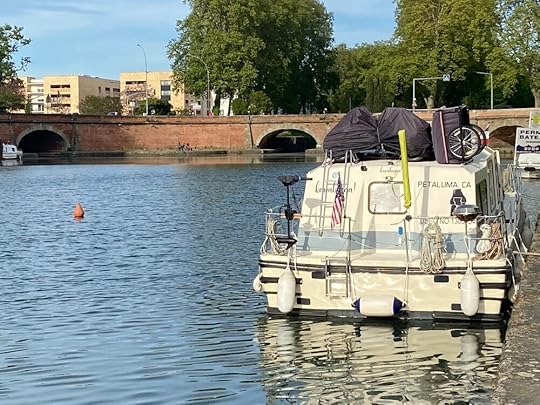
Arrival in Toulouse where we take the middle archway in the morning leading to the Canal du Midi.

Entering the place du Capitole.


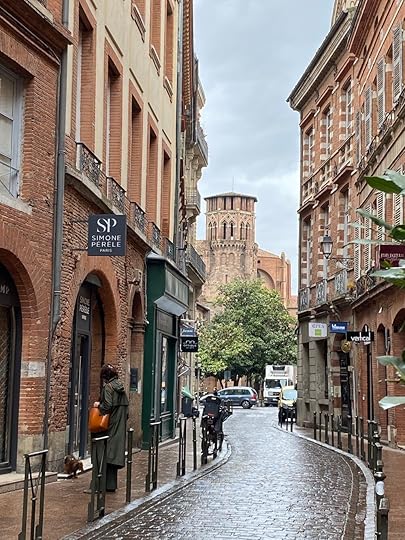

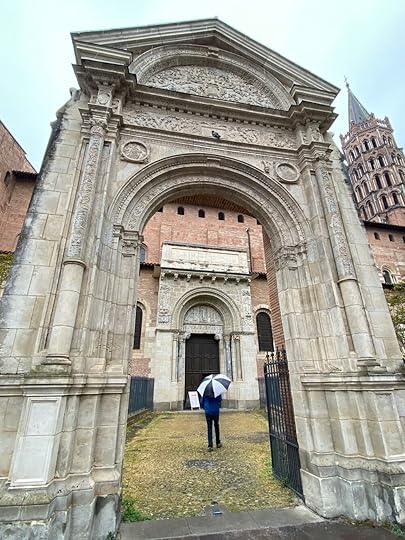


Not too cold to eat a floral sculpted cone!
April 17, 2021
And We're Off! / C'est parti!

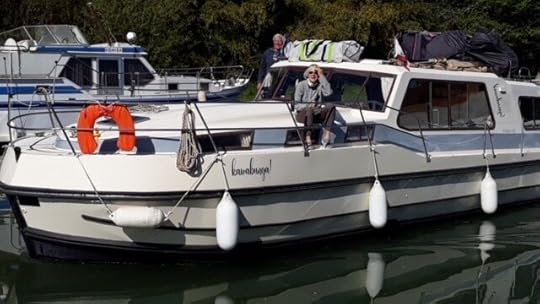
Au revoir!
ENGLISH
As a journalist, a deadline is a deadline, consequently, when we set April 15 as our departure date, it was written in stone, ready or not. Thanks to the many extra months’ preparedness we were dealt (Covid oblige), hubby’s well trained architectural analytical mind to envision and design mechanical and onboard living scenarios, and my more practical real life household expertise(!), we were ready! Not too many glitches to report after our one month of putting everything in place from our starting point of Buzet-sur-Baïse. (See above map, #1).
As of April 17, we cruised to Moissac (about 45 miles south of Buzet), for A two-night stay, having made our first night stop in the tiny water hamlet of Boé, just south of Agen . The above map shows our starting point, where we intend to travel to the Mediterranean, and eventually up the Rhone River through Avignon to Germany. How far we’ll get this year is anybody’s guess. Experience has taught us that stuff happens along the way (good and bad), so we shall see.
FYI I have a video or two I wanted to post, but apparently I need to learn how to do that with my website uploader. When I figure it out, you will see!
FRANÇAIS
En tant que journaliste, la date limite est sacrée. Nous avions fixé la date du 15 avril pour notre grand départ et il n’était pas question d’y déroger, prêt ou pas prêt.
Profitant de mois supplémentaires de préparation (faute au Covid), et après la mise à contribution des qualités d’analyse et de vie à bord de ma chère moitié, et mon expertise plus matérielle de la vie pratique, nous étions prêts. Peu d’anicroches à reporter après un mois passé à mettre tout en place depuis notre point de départ de Buzet-sur-Baïse. (Voir le plan ci-dessus, #1).
Nous avons atteint Moissac (environ 70 km au Sud-Est de Buzet) le 17 avril après deux jours de navigation et en ayant fait une première étape à Boé, près d’Agen. Le plan ci-dessus vous montre notre point de départ ainsi que notre approche de la Méditerranée et, éventuellement le Rhône à travers Avignon et enfin l’Allemagne. Reste à savoir jusqu’où irons-nous cette année ?
L’expérience nous a appris que nous rencontrerons beaucoup d’imprévus sur notre route, en bien ou en mal, et les plans peuvent changer.
Pour information, j’ai une ou deux vidéos que je voudrais inclure mais, apparemment, j’ai encore a apprendre. Je trouverai !
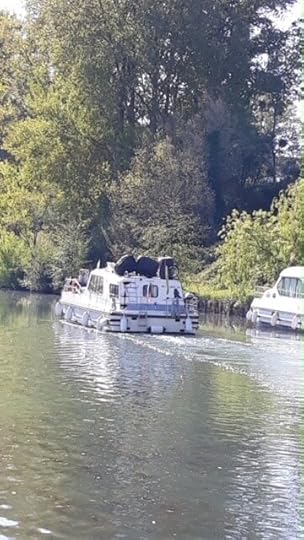
Leaving Buzet where we had been for almost a month.

Coming up to a lock.

Getting “locked” up.
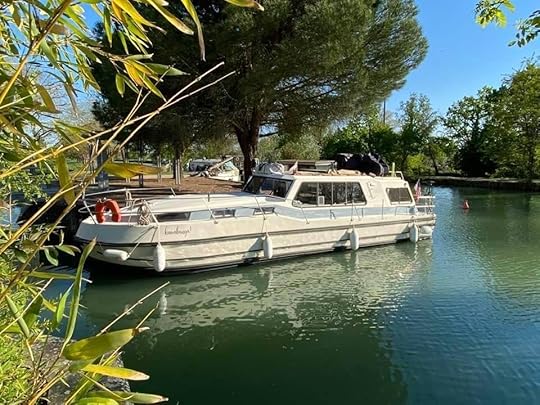
A “one night stand” in Boé.
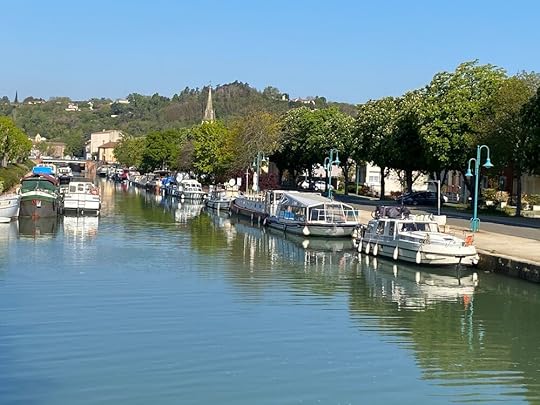
Docked in Moissac for two nights. Leaving Sunday April 18.
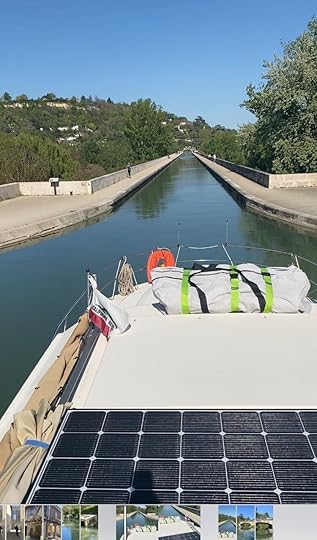
Entering a “pont canal,” like an aqueduct for boats. approaching the city of Agen. We were on a water bridge going over the Garonne River.
April 11, 2021
Goodbye Faithful Friend / Au Revoir, Caliph

Caliph and Pacha at home one last time.
ENGLISH
We said goodbye to our dear Collie, Caliph, about 10 days ago. He had valiantly made one last plane trip to France, only to be here about a month before sudden kidney failure got the best of him. He was almost 12 years old, a respectable long life for his breed. He died peacefully in his sleep after a two-day downhill slide. Michel misses his constant companion terribly, and we know his sidekick, Pacha, the home ruling feline back on terra firma, will miss him. The first “person” Pacha always seeks out upon our return from some outing or trip was always Caliph, with a searching “meow” and head rub to his muzzle.
It’s looking like our departure date is still holding at April 15. Most of the major improvement projects and repairs are done. Just some last minute grocery shopping and laundry to do, and we will be off. Caliph’s ashes will accompany us, and he will be properly honored with his permanent memorial in his Petaluma domain upon our return.
FRANÇAIS
Caliph, notre colley adoré, nous a quittés il y a une dizaine de jours. Il avait vaillamment effectué un dernier voyage vers la France avant de succomber, après à peine un mois, à une défaillance rénale soudaine. Il devait avoir 12 ans le 30 juin. Il est mort, sans souffrance, après deux jours d’hospitalisation. Il manque terriblement à Michel qui ne le quittait jamais. Il va manquer énormément à son meilleur ami et complice, Pacha, notre chat resté à la maison. Lorsque nous rentrions de voyage, Pacha accueillait toujours Caliph avec ses câlins avant même de venir nous voir.
Nous prévoyons toujours de partir vers le 15 avril. Nos travaux de remise en route et d’amélioration sont terminés. Ne reste plus que quelques courses de dernière minute et la lessive… Les cendres de Caliph nous accompagneront avant le retour à Petaluma où il restera aux cotés de Sable, son prédécesseur.
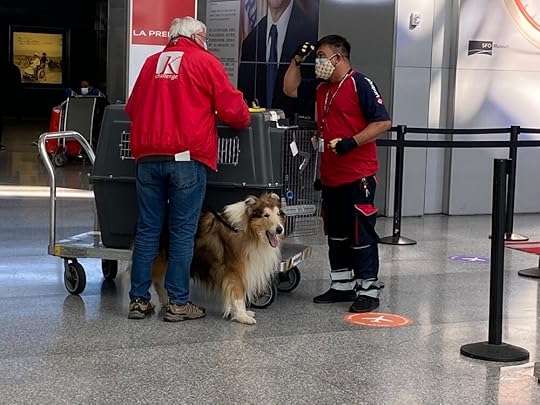

Goodbye Faithful Friend

Caliph and Pacha at home one last time.
We said goodbye to our dear Collie, Caliph, about 10 days ago. He had valiantly made one last plane trip to France, only to be here about a month before sudden kidney failure got the best of him. He was almost 12 years old, a respectable long life for his breed. He died peacefully in his sleep after a two-day downhill slide. Michel misses his constant companion terribly, and we know his sidekick, Pacha, the home ruling feline back on terra firma, will miss him. The first “person” Pacha always seeks out upon our return from some outing or trip was always Caliph, with a searching “meow” and head rub to his muzzle.
It’s looking like our departure date is still holding at April 15. Most of the major improvement projects and repairs are done. Just some last minute grocery shopping and laundry to do, and we will be off. Caliph’s ashes will accompany us, and he will be properly honored with his permanent memorial in his Petaluma domain upon our return.





